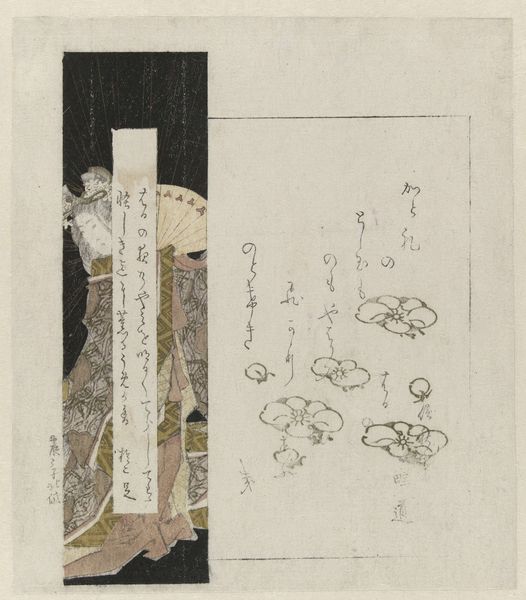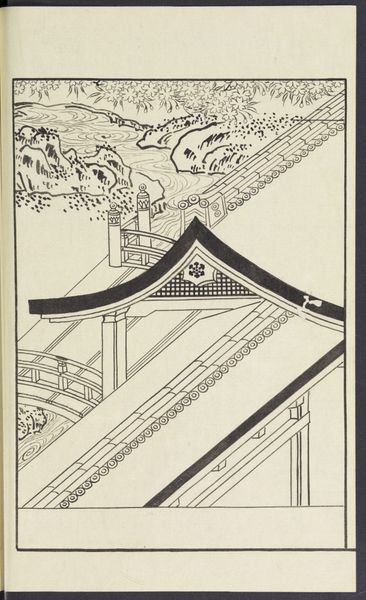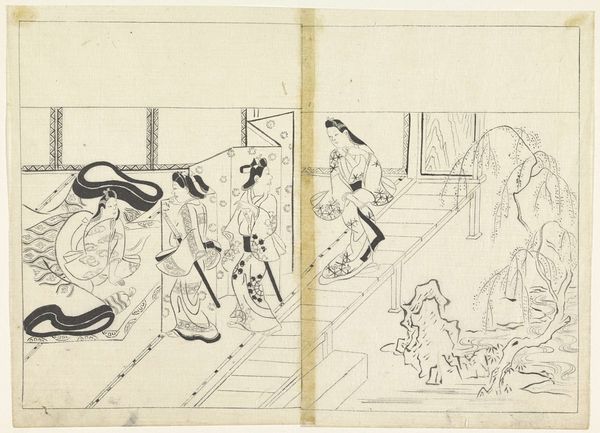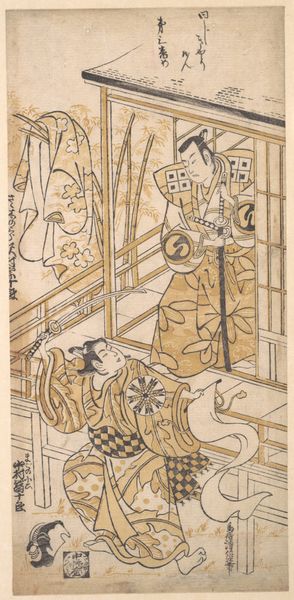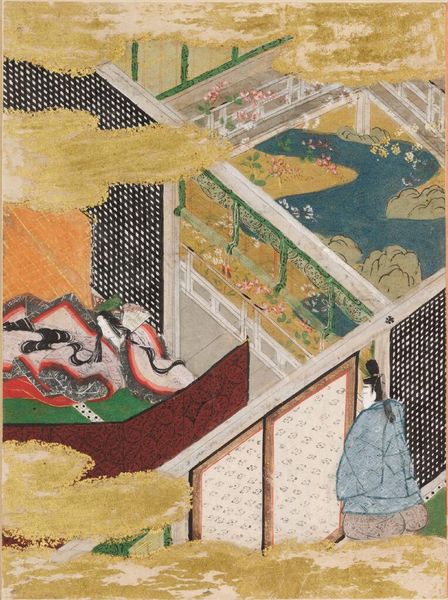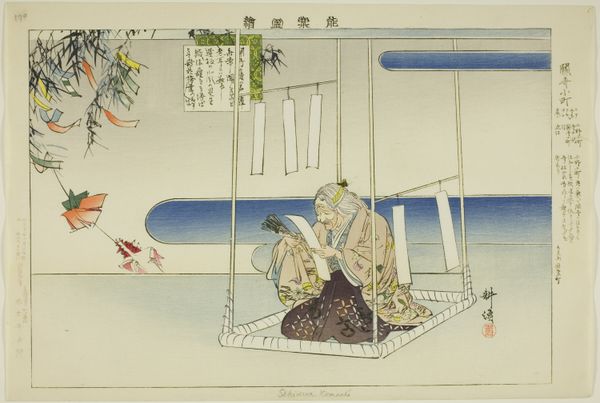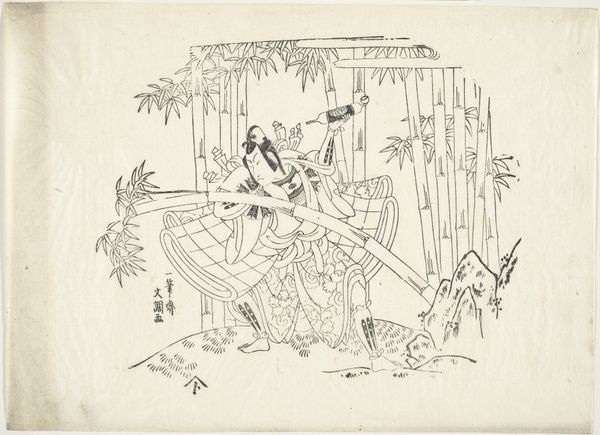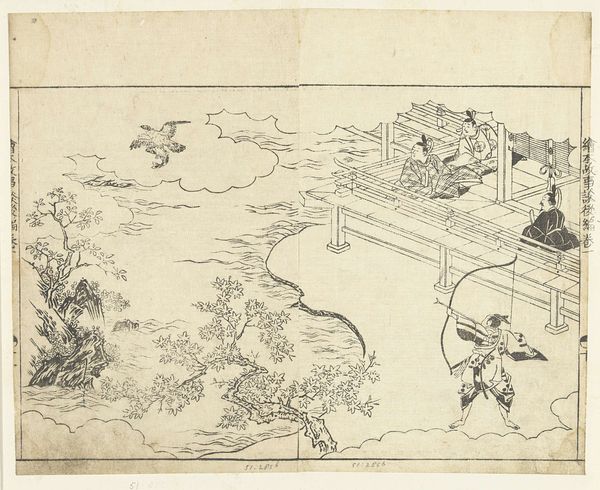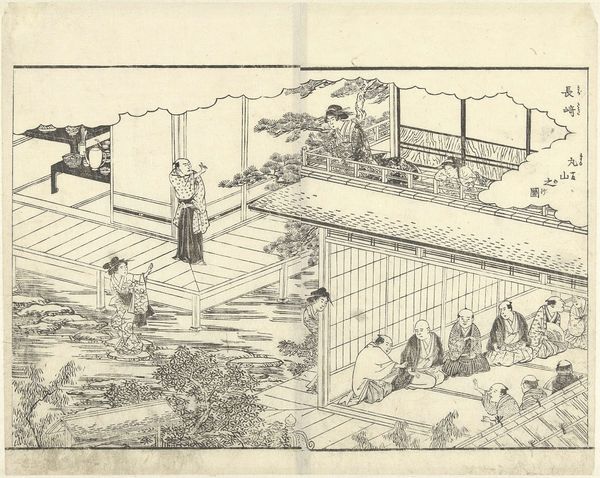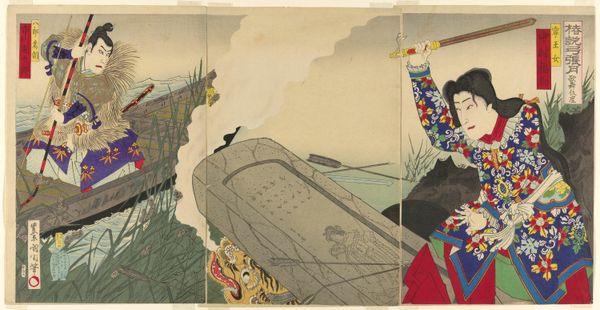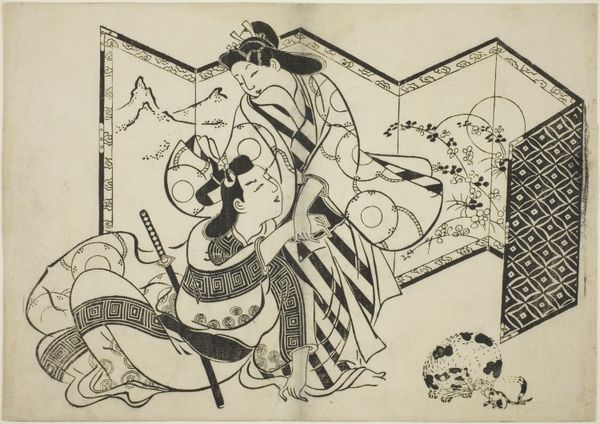
Dame gezeten in een vertrek voor een tafel, waarop twee boeken en schrijfgerei liggen 1628 - 1694
0:00
0:00
hishikawamoronobulingchuanshixuan
Rijksmuseum
drawing, ink
#
portrait
#
drawing
#
asian-art
#
ukiyo-e
#
ink
#
line
#
genre-painting
Dimensions: height 263 mm, width 187 mm
Copyright: Rijks Museum: Open Domain
Curator: Welcome. Before us is a captivating ink drawing by Hishikawa Moronobu, a celebrated master of Ukiyo-e. This piece, "Dame gezeten in een vertrek voor een tafel, waarop twee boeken en schrijfgerei liggen," whose title translates to "Lady seated in a room before a table, on which lie two books and writing utensils," likely dates between 1628 and 1694 and resides here at the Rijksmuseum. Editor: My immediate impression is one of quiet contemplation. There's a wonderful stillness conveyed through the delicate lines; the sparse detail invites you to imagine the texture of her robes and the paper, consider how material comfort intertwines with the artist's choices. Curator: Precisely. We observe a seated woman amidst the paraphernalia of literacy and artistry, indicative of the increasing importance of women in literary culture during the Edo period. How does her image conform to the social construction of gendered ideals through objects of consumption and cultural practice? Editor: We see her surrounded by these items: books, inkstones, writing implements... The labor and value invested in those materials speak volumes. And, let's not ignore the elaborate kimono. It’s more than just clothing; it is a status symbol, woven with narratives of societal expectations and artisanal craftsmanship. How did women negotiate social roles via objects they owned or the processes associated with maintaining, caring for, and interacting with such articles? Curator: Absolutely. Moreover, Ukiyo-e art served not just as a means of artistic expression, but also as a reflection and promulgation of contemporary ideals concerning femininity and beauty. Looking at the cultural politics embedded in Ukiyo-e imagery offers valuable perspective on historical representation and female empowerment in this historical moment. Editor: Her calm disposition speaks of domestic productivity, subtly implying what productive, upper-class labor meant. Her image embodies how art functions not in isolation, but intersects within wider contexts concerning labor and gender. Curator: Agreed. The way that Moronobu depicts the scene also contributes to a visual language used to communicate status and learning. By examining how individuals negotiate social constructs with consumer practices, how this is represented in a drawing—it becomes clear how we see cultural ideals produced visually. Editor: Seeing how our different takes are linked brings me a different way to view Japanese traditions. Thank you. Curator: The pleasure was all mine; our dual interpretations shed more light on this remarkable artwork.
Comments
No comments
Be the first to comment and join the conversation on the ultimate creative platform.
